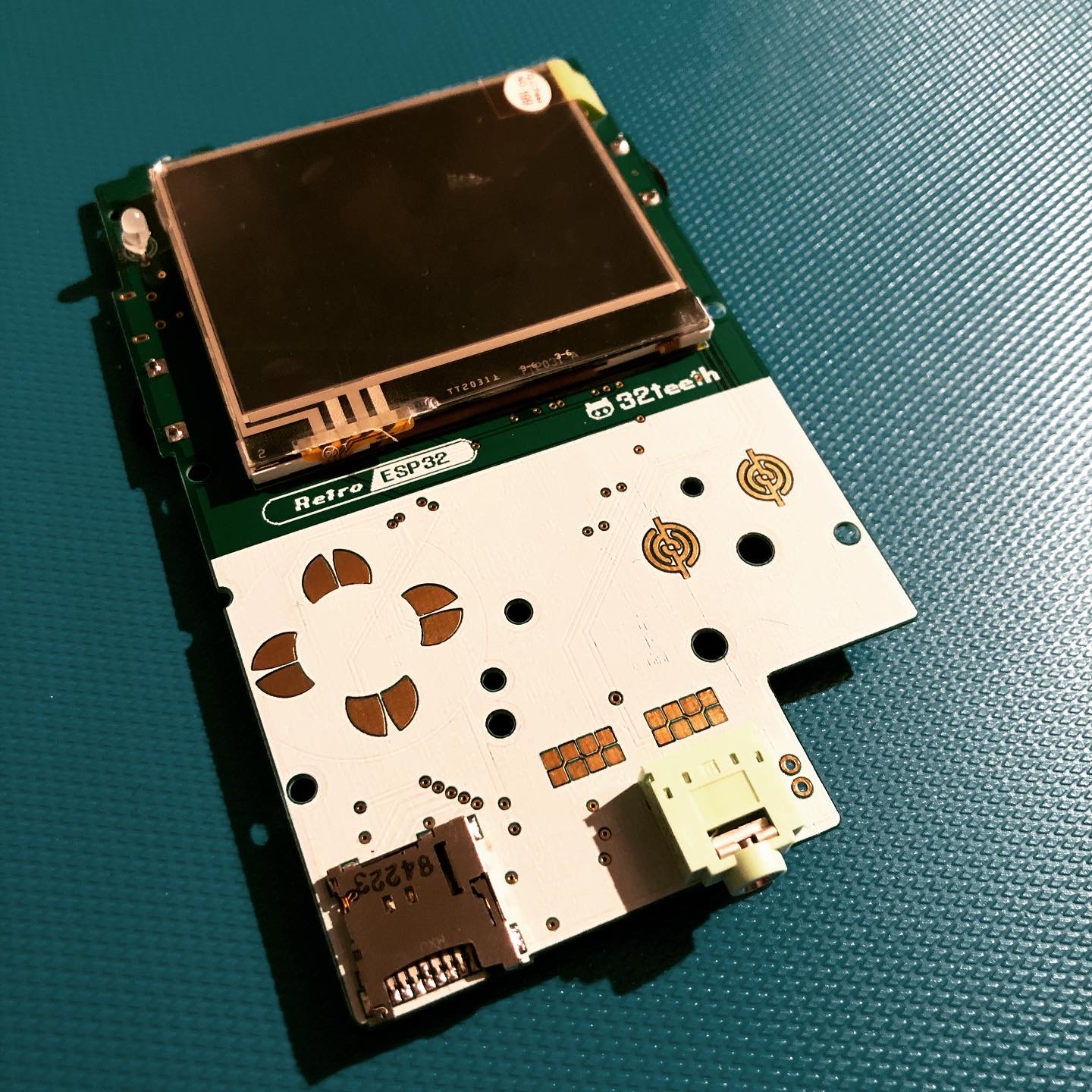Retro ESP32 is a turbo charged Odroid Go Launcher, Emulator and ROM Manager
| Retro ESP32 In Action | Summary |
|---|---|
 |
 Retro ESP32 is the ultimate feature packed Odroid Go Launcher. Includes color schemes and theming. Drawing inspiration from the popular RetroArch emulator front end of choice. We packed 11 (current count) prebundled emulators including ROM / Game manager. Additionally each emulator includes an in game menu for further management. Get Your Copy Today |
 |
Looking for a Game Boy Pocket drop in solution? Get Yours Today Exculsively at:  |
Update Odroid Go Firmware
This only applies to owners of the Hardkernel Odroid Go NOT the Retro ESP32
If you have purchased a Retro ESP32 from us, you can skip this step.
Get the latest Retro Odroid Go Firmware
Copy, Mount, Flash
We kept installation of Retro ESP32 super simple.
- Downloads the latest release
- Unzip the file
- Copy RetroESP32.fw to the odroid/firmware folder of your prepared SD card
- Mount the SD Card back into your Odroid Go
- Restart Holding the B button
- Select Retro ESP32 from the firmware list
- Sit back and relax while your Odroid Go flashes the new firmware
What else do you need to know
- Nintendo Entertainment System
- Nintendo Game Boy
- Nintendo Game Boy Color
- Sega Master System
- Sega Game Gear
- Colecovision
- Sinclair Zx Spectrum 48k
- Atari 2600
- Atari 7800
- Atari Lynx
- PC Engine
What makes Retro ESP32 different
- Configurator
- Themes (color pack and icons)
- RetroArch like GUI experience
- In game HUD menu
- Recently Played (First in Launchers Community)
- Favorites List (Another First)
- 3 Scale levels for 'Core' Emulators (Original, Box, Full Screen)
What to press and when
Please see the Usage Document
Don't be shy, our team is here
Have a great idea? Want to see a feature? Ran into a problem? Use our Project and Issue sections to have your say.
- Eugene Yevhen Andruszczenko - Initial and Ongoing Work - 32teeth
- Fuji Pebri - Espressif IOT Consultant - pebri86
This project is licensed under the Creative Commons Attribution Share Alike 4.0 International - see the LICENSE.md file for details
Although we do this for 💕 of 🕹️
We Also Like Coffee!
Please Consider Supporting
Did you know, you can support us in a few way? We offer multiple sponsorship tiers, with different rewards!
Take a look. See what fits.
Thank You









